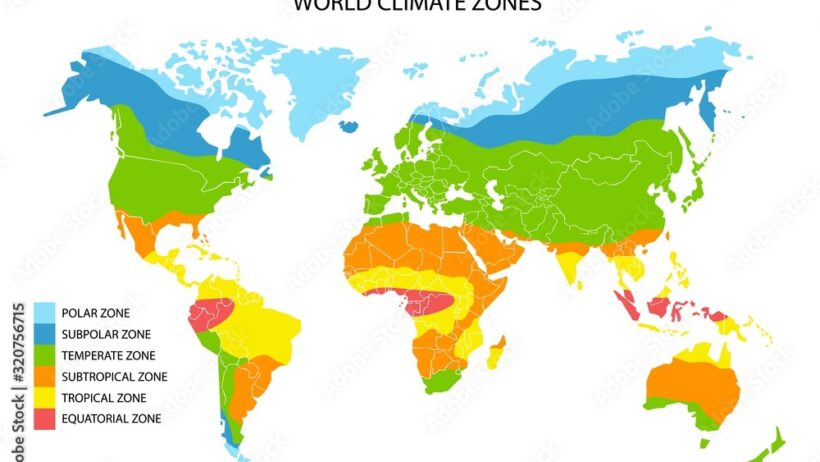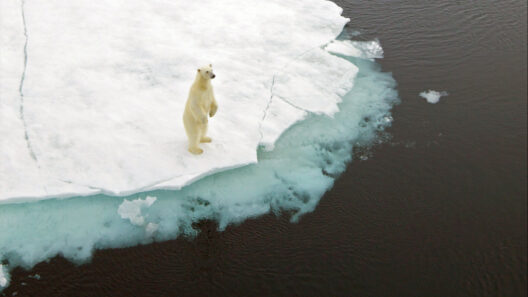Continental climates and temperate climates represent two distinct ecological contexts that are not merely geographical, but also encapsulate a rich tapestry of atmospheric phenomena, which profoundly influences biodiversity, agriculture, and human habitability. For those who observe these climates, the differences may appear as mere variations in temperature and precipitation. However, a closer examination reveals an intricate interplay of environmental factors that beckons a deeper exploration into how these climates impact global ecosystems.
At the core of understanding these climates is an acknowledgment of their defining characteristics. Continental climates typically emerge in the interior regions of large landmasses. These climates are delineated by their pronounced temperature fluctuations, with summers often sweltering and winters bitterly cold. Here, the lack of moderating influences from large bodies of water catalyzes these dramatic shifts. In contrast, temperate climates, which are predominantly found between the tropics and polar regions, are characterized by more moderate conditions, where seasonal variations are less extreme. These climates benefit significantly from the regulating effects of nearby oceans, which help to maintain a more stable temperature range throughout the year.
One of the most striking differences lies in temperature profiles. In continental climates, the absence of significant water bodies leads to more extreme thermal dynamics. The summers, while hot, are frequently punctuated by shorter, intense heatwaves, often reaching sweltering peaks. Conversely, the winters can plunge into frigid temperatures, often accompanied by snow, which can persist for extended periods. The diurnal temperature variations can also be marked, with nights often cooling dramatically after hot days. Such variance can lead to ecological implications, affecting migration patterns of fauna and the phenological behavior of flora.
Temperate climates, on the other hand, exhibit a more temperate profile, where temperatures do not oscillate to the extremes observed in continental regions. The proximity to oceans not only moderates extreme heat and cold but also provides moisture, allowing these ecosystems to thrive with a diverse range of vegetation. Forests, grasslands, and shrublands are prevalent in temperate zones, each adapted to the milder climate and availability of rainfall. This ecological diversity stands in stark contrast to continental regions, where harsher climates may limit biodiversity based on species’ specific adaptive capabilities.
Precipitation trends further differentiate these climates. Typically, continental climates receive lower annual precipitation than their temperate counterparts. In many regions characterized by a continental climate, humidity levels are often low, leading to arid conditions despite significant temperature extremes. This limited precipitation can induce droughts, thereby compromising agricultural productivity. Farmers in these regions face significant challenges in yield stability, reliant on techniques that optimize water usage, such as irrigation, which might not be necessary in more temperate climates where rainfall is more consistent and often exceeds evaporative demands.
Conversely, temperate climates are defined by greater precipitation distributions throughout the year. With the benefit of geographic diversity, these climates can vary significantly, from the temperate rainforests that experience high rainfall to areas that receive adequate moisture to support diverse ecosystems. This more abundant water supply fosters agriculture with few constraints, effectively enhancing food security compared to continental regions. The seasonal cycles in temperate climates—which include wet and dry seasons—also inspire a variety of agricultural practices, benefiting both local economies and global markets.
The flora and fauna that inhabit these climates have adapted uniquely to their environments, further accentuating the differences between the two. Continental climates are often marked by hardy plant species that can withstand extreme temperatures and variable moisture availability, such as drought-resistant shrubs and deep-rooted grasses. Animal life here exhibits similar adaptations; many species endure rigorous seasonal changes, showcasing resilience against environmental extremes.
In contrast, the biodiversity within temperate climates tends to be richer and more varied. The modulation effect of nearby water bodies supports an array of deciduous and evergreen forests, which provide habitat for numerous species. Migratory birds, large mammals, and abundant invertebrates thrive in these environments, illustrating the intricate connections between climate, biodiversity, and ecological health.
The implications of these climatic differences extend beyond natural environments, influencing human activity, settlement patterns, and economic frameworks. Continental climates often necessitate specialized agricultural practices and infrastructure due to their stark temperature variances. Challenges such as frost vulnerability can severely restrict the growing seasons, thus impacting crop selections and farming methods. Society must adapt through innovations in farming technology or shifts in plant varieties to maximize agricultural outputs under fluctuating climatic conditions.
By contrast, temperate climates provide conducive environments for more varied agricultural systems, fostering economic stability. The enhanced biodiversity in these regions often leads to resilient ecosystems that can better withstand climate variations, which is an invaluable asset in the face of modern challenges such as climate change.
In summation, while the distinctions between continental and temperate climates may seem straightforward on the surface, a deeper investigation reveals complex interrelations that contribute to their stark divergences. From temperature extremes and precipitation patterns to ecological diversity and human adaptation, these climates encapsulate the myriad ways in which our planet’s systems interact and influence one another. It is in these differences that we can appreciate the intricate balance of our environment, requiring thoughtful consideration as we navigate the challenges of living in an increasingly unpredictable world.







